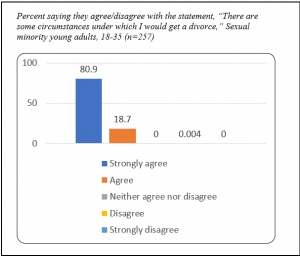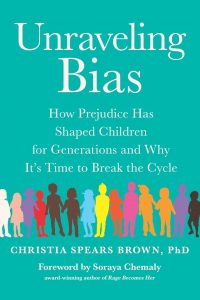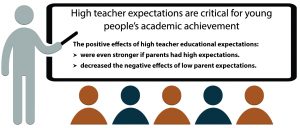Reprinted from Deadric T. Williams blog September 26, 2022
Critical and comprehensive theoretical frameworks connecting racism, race, and racial inequality are absent in family research. For instance, conventional research on racial variations in family formations and family processes is often reduced to simple average differences without contextualizing racialized groups as political, social, and historical categories. Even more, the term “family” in family scholarship appears to be shorthanded for “white families” whereas the use of “race” is shorthanded for “minority families”. Family scientists must abandon this logic because it limits fruitful and more accurate discussions about racial inequality. Instead, family scholars should view racial inequality as a two-sided coin with Black families’ disadvantage on one side and white advantage on the other side.
The purpose of this blog post is to present a brief note on racial inequality, racism, and race to family scientists. To help organize this brief note, I focus on three general questions: (1) What do we know about racial inequality? (2) How can centering race and racism better inform our understanding of racial inequality? (3) How can family scholars move racial inequality research forward?
Let’s begin!
What Do We Know About Racial Inequality?
Racial inequality is a social fact. That is, individuals racialized as Black are doing worse on every major indicator of well-being compared to individuals racialized as white. From early in the life-course such as stillbirths and maternal/infant deaths to later in the life-course such as adult mortality. And everything in-between such as income and poverty, unemployment, wealth, health, home ownership, student loan debt, and neighborhood quality. These inequalities persist over time.
How Can Centering Race and Racism Better Inform Our Understanding of Racial Inequality?
Advertisements about:blank Report this ad
Most reasonable people would not debate whether racial inequality exists. The debate tends to emerge when explanations are given about why racial inequality exists and persists. Some explanations focus on individual behaviors (e.g., the rise in nonmarital childbearing among Black women); and some explanations center on structural conditions (e.g., laws, policies, discrimination, etc.). The explanations—individual behaviors or structural conditions—make assumptions about race and racism that are taken for granted.
I highlight the assumptions undergirding these perspectives to provide a more holistic approach to the study of racial inequality, especially for scholars who study families.
The “individual behaviors” and “structural conditions” dichotomy falls within two broader theoretical camps—(1) essentialism (emphasizing individual behaviors) and (2) social constructionism (emphasizing structural conditions). These two camps are well known among scholars who study race and racism. They provide the rationale for why racial inequality persists. For a more comprehensive understanding, see here and here.
To better understand these two camps, we need to know what assumptions each camp—essentialism and social constructionism—make about race and racism. For example, from a racial essentialism perspective, the key assumption is that race makes racism possible. Thus, eradicating racism will lead to racial equity. From a social constructionism perspective, the key assumption is that racism makes race possible. Thus, “race can never be an explanatory factor apart from racism because race is always already a function of racism”.
In the sections below, I first elaborate on the assumptions of both camps and provide examples of how these perspectives guide our understanding of racial inequality. Next, I end this blog by discussing a new conceptual model for understanding racial inequality.
Essentialism versus Social Constructionism
Racial Essentialism. Although most scholars view race as a social construction, the social construction heuristic is seldom employed. In fact, conventional racial differences research almost always takes an essentialist approach—albeit unintentional. From this perspective, race represents biologically (or culturally) real groups.
Contemporary studies do not make explicit arguments about race as biology but cultural essentialism in family research refuse to die. In fact, the lack of conceptualization of race can lead to misconceptions that racialized groups are inherently biological (or culturally) different. This is especially important given that scientific racism persists in the U.S. One of the biggest limitations of contemporary research on racial inequality in families is that many studies run the risk of reproducing an essentialist logic of race by (1) presenting race as an ahistorical demographic variable, (2) assuming racism is episodic–or a relic of the past, and (3) framing individual-level behaviors as central explanations for racial inequality.
First, treating race as an ahistorical, demographic characteristic of the population reifies race as an essentialist characteristic. This happens when scholars begin studies with racial variations in a given outcome but does not explain what race is. This approach is limiting because Black families’ disadvantage becomes hyper-visible whereas white families’ advantage becomes hyper-invisible. Moreover, this approach treats Black disadvantage and white advantage as unrelated, and the point of emphasis in research is figuring out what mechanisms can make Black families “like” white families.
Second, the idea that racism is episodic draws attention to the belief that racism is a thing of the past and no longer a cause for racial inequality. Consider Figure 1 below. From an essentialist perspective, Black families’ adverse conditions are understood in the context of overt racism (slavery and Jim Crow laws). In the post Civil-Rights era, however, racism is no longer an issue. Thus, racism is era-specific and only happened during certain “episodes” of American history.

Third, given that racism is viewed as a thing of the past, individual-level “behaviors” are now the reason racial inequality persists in the United States, especially in the post Civil-Rights era (see Figure 2). This logic mirrors the post Civil Rights explanations of inequality. Contemporary research tends to over-invest in using individual-level characteristics or behaviors. For instance, family structure (marriage vs. non-marriage) is one of the most used individual-level behaviors to explain the Black-White gap across indices of wellbeing. This logic dates back to the 1960s. The general idea is that racial variations in these behaviors (e.g., unmarried childbearing) may help to understand variations in the outcome of interest (i.e., racial inequality). This approach has proven to be ineffective in addressing racial inequality (see here and here).

The challenge here is that there is usually no argument for addressing why racial variations exist in the so-called behaviors in the first place. Family formations is a great example of this. For example, decades of research on understanding racial variation in family formations relied on deficit approaches or economic reductionist arguments. Yet, scholarship on how Black mothers create adaptive strategies for dealing with omnipresent white supremacy and patriarchy has been largely ignored in conventional research–see Franke 1999; Frankel 1999; Hill 2006; Hunter 2017; Lenhardt 2014).
Ironically, contemporary research continues to operate from a “backdoor” essentialist approach. Figure 3 represents a typical conceptual model used in contemporary research. The conventional approach “mirrors” an essentialist perspective because the point of interest tends to focus on individual behaviors as mechanisms to account for racial inequality. For example, most scholars examining “racial differences” fall into the trap of (1) failing to fully conceptualized race at the onset of their studies, (2) treating individual-level characteristics as race-neutral in explaining the racial gap, and (3) employing race-comparative analyses that position white families as the standard against which people of color are measured. I have written about this here.

Social Constructionism. Social constructionists recognize race as a social invention—created to justify and maintain racial oppression, domination, and exclusion. From this perspective, racism makes race possible. Below, I elaborate on social constructionism to chart a path forward to studying racial inequality in family research. Specifically, I draw on three central tenets from Critical Race Theory: (1) race is socially constructed, (2) racism is a permanent feature in the U.S., and (3) ideas about individualism serve a new set of racist ideologies to maintain the status quo—colorblind racism.

Note: Given that I am currently working through the above conceptual model in my own research, I refrain from explicitly elaborating on these factors.
How Can Family Scholars Move Racial Inequality Research Forward?
Adequately understanding race and racism matters for family scholars studying racial inequality. I discuss three interrelated ways family scholars can move racial inequality research forward. I offer a new conceptual model (Figure 4) that centers racism and race to provide a more adequate explanation for racial inequality than conventional approaches. This model is an updated version of my previous model published in the edited volume, Africana Demography.
First, Panel A (Figure 4) is an illustrative example of the social construction of race. This section of the conceptual model makes apparent that racism is composed of both ideology and structure. The ideology begins with the premise that human groups are biologically real and can be hierarchically ordered (Fields and Fields 2014; Shelby 2014). The structure component of racism refers to the micro- and macro-level practices that subordinates so-called inferior racialized groups (Golash-Boza 2016). Ideology and structure are mutually reinforcing.
Second, the path from Panel A to Panel C (Figure 4) illustrates the idea that racial inequities are measurable manifestations of racial stratification in the United States via racism. This path reflects the second CRT tenet, the permanence of racism. This tenet recognizes that “racism is ordinary, not aberrational” (Delgado and Stefancic 2017) and is sensitive to stability and change. For instance, although racism changed from overt (e.g., genocide, slavery, Jim Crow laws, etc.) to covert (e.g., color-blind racism), racial inequalities
persist (Bonilla-Silva 2017; Feagin 2013; Mills 1997; Omi and Winant 2014). The racial hierarchy is resilient to social change by adjusting and altering the mechanisms responsible for racial inequality.
Last, Panel B (Figure 4) addresses the mechanisms maintaining racial stratification. Critical race scholars reject the idea of meritocracy and “colorblind” as explanations for contemporary racial inequality. Instead, scholars from this line of reasoning point to racism as responsible for persistent racial inequality. Thus, instead of focusing on individual-level behaviors as mechanisms to reduce or “account for” racial inequality, critical scholars tend to demonstrate how racism is embedded in the state and spatial dynamics maintaining and perpetuating racial inequality.
Moreover, this approach also highlights how focusing on individual-level characteristics contributes to the maintenance of racial inequality. Family structure is a great example. For instance, given that Black marriages were tied to citizenship laws, and marriage is a gendered institution, Black women have always created alternative family forms. The state interpreted these adaptive strategies (e.g., nonmarital childbearing) as deficiencies, resulting in out-of-wedlock childbirths becoming a central explanation for racial inequality. Thus, the state superimposed Eurocentric (or white) logic on Black families’ lived experiences while rendering white supremacy invisible–this is the recipe for maintaining racial subjugation. Instead of focusing on structural racism, policies concentrated on marriage as a way to reduce inequality. Yet, racial gaps in several indices of well-being have stayed the same and some even grew wider.
In the end, how, and in what ways, scholars approach racism, race, and racial inequality has real implications for how research studies are designed, what research questions are considered important, how data are analyzed, and what conclusions are drawn.
Conclusion
This blog post serves as a brief note to family scholars studying racial inequality. My central argument is as follows: to adequately address racial inequality requires a more critical and comprehensive understanding of racism and race. How scholars approach racism and race matters. Sadly, critical discussions on racism and race in family inequality research are largely absent. Scholars have, however, critiqued family scholarship more broadly (see here and here and here and here and here). Scholars should be clear about racism, race, and racial inequality in family research because it can help move studies away from maintaining the status quo by charting a path towards a family science of Black emancipation.
Deadric T. Williams is an Assistant Professor of Sociology in the Department of Sociology at the University of Tennessee, Knoxville. Williams’ research focuses on race and racism, Black families, health, and inequality. Williams is a W.T. Grant Scholar. You can follow them on Twitter @doc_thoughts









